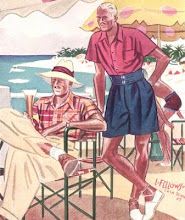
I recently needed some info on caring for my ties , heres what i gathered.
Caring for a tie isn’t as simple as you may think. A tie requires much more than being clumsily stuffed in a drawer when it’s not being worn. It also requires care when being taken off. For example, when removing your tie, don't pull the thin end through the knot unless you want to ruin the tie’s shape. Instead, remove the tie by following the tie-tying steps in reverse. And this tip is just the beginning…
To preserve this delicate component of your wardrobe, follow these easy tips so that your favorite ties hang with you for years to come.
Storage
Even more important than the way you wear your tie is the way you store it. The first step in maintaining your tie collection is putting it away properly. Regardless of the type of fabric silk or wool -- ties are delicate. As soon as your tie comes off, hang it around a coat hanger or over the dowel in your closet, don’t lay it down on the dresser or throw it over a chair. Hanging the tie up properly allows the creases from the knot to fall out- plus, hanging it in your closet keeps it out of bright, natural light that can fade the fabric.
Most department stores sell inexpensive hangers just for ties, paying you big dividends on a small investment. And for the guy on the go, transport your tie in your luggage by folding it into fours and placing it inside your coat pocket, shoe or sock. For the more meticulous packer, specialty tie cases exist that are designed to hold your tie flat and secure.
Wrinkles
Wrinkles are a universal sign of aging, and ties are no exception to this fact. The more often a tie gets tied, the more knot impressions it sustains and absorbs, so you must do all you can to protect your ties from excessive wrinkles. The first step in preventing wrinkles is to never wear the same tie two days in a row; like a good pair of shoes for say, a tie needs time to regain its shape. But, regardless of your best efforts, your ties are probably going to wrinkle. The key is knowing how to get the wrinkles out.
While storing your ties properly is your first line of defense, it may not be enough. As a backup, turn to steam. The easiest trick is to hang your tie inside the bathroom while you shower. Or, for tougher wrinkles, use a handheld steamer to remove deep-set, pesky creases. Conair makes several inexpensive models, many of which are sized for travel. Carrying a handheld steamer while traveling is great not only for ties, but also for shirts, pants and suits.
Stains
Depending on the fabric of the tie, the tiniest of stains can ruin the garment. When it comes to keeping dirt off your tie, use the utmost vigilance to keep it stain-free because the first step in treating stains is preventing them.
A tie tack works wonders for keeping your tie out of harm’s way (aka your plate). But, while a tie tack holds the tie in place, it also puts a hole in the fabric. Prevent these punctures by putting the tack underneath the tie, through the label. You’ll get the same effect without the drawback.
A tie tack, however, is not a cure-all for stains. In every man’s life, a little food must fall... and when it falls on your tie, act quickly. For most accidents, if you immediately blot the stain lightly with cold water or soda water it will prevent the stain from setting in. But for greasy or oily stains, water won’t work. Instead, apply talcum powder to the spot as soon as possible -- it will absorb the oily moisture from the fabric.
If neither cold water nor talcum powder works in ridding the stain, all hope is not lost. To save your favorite tie, there is one last-ditch effort that will work: a specialty tie-cleaning service. Tiecrafters in New York, for example, will completely deconstruct your tie, clean the fabric, and then reassemble it. If you opt for a tie-cleaning service, investigate their cleaning process and make sure they don’t simply press the tie, mashing its rolled edges flat.
























